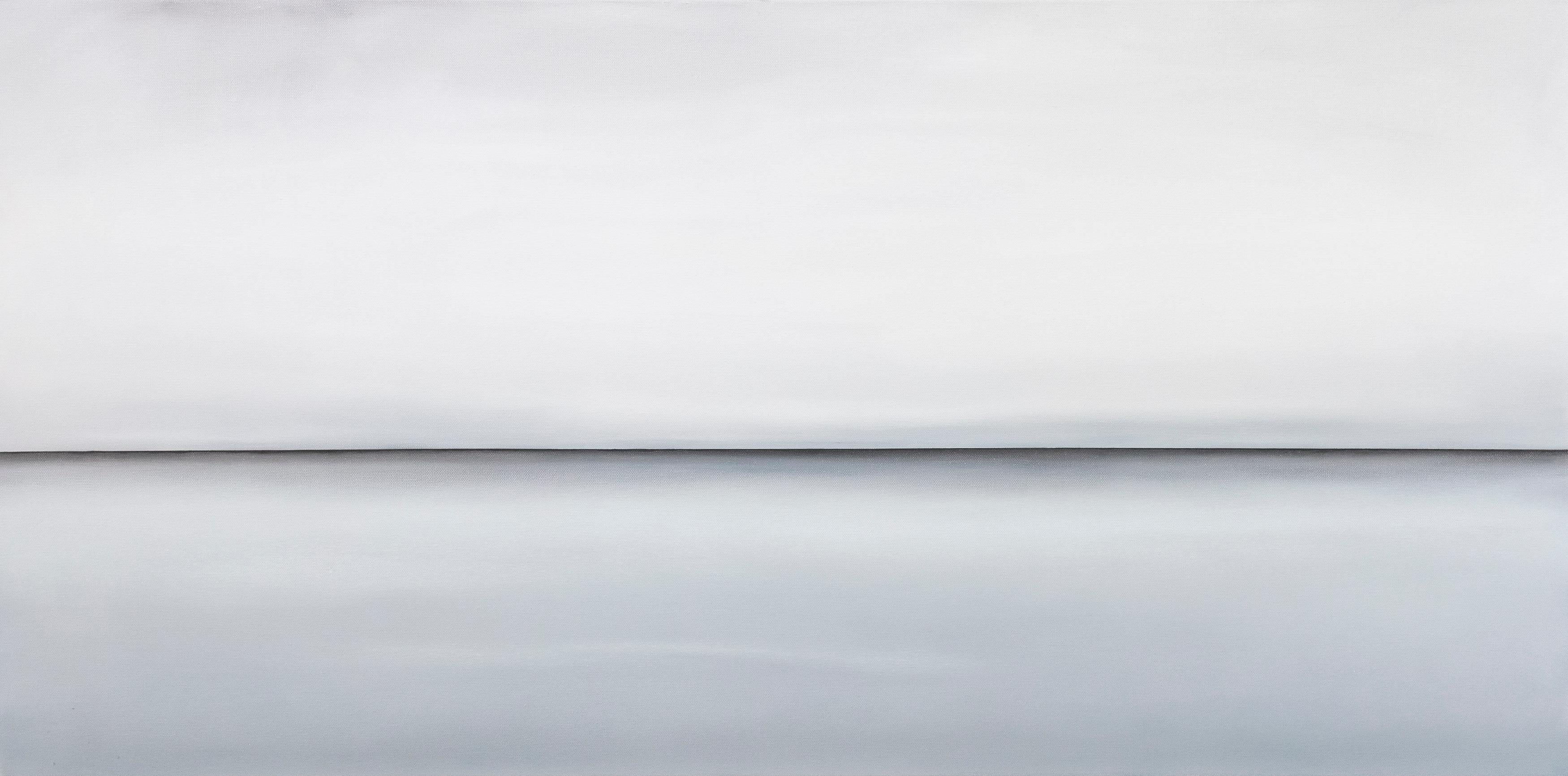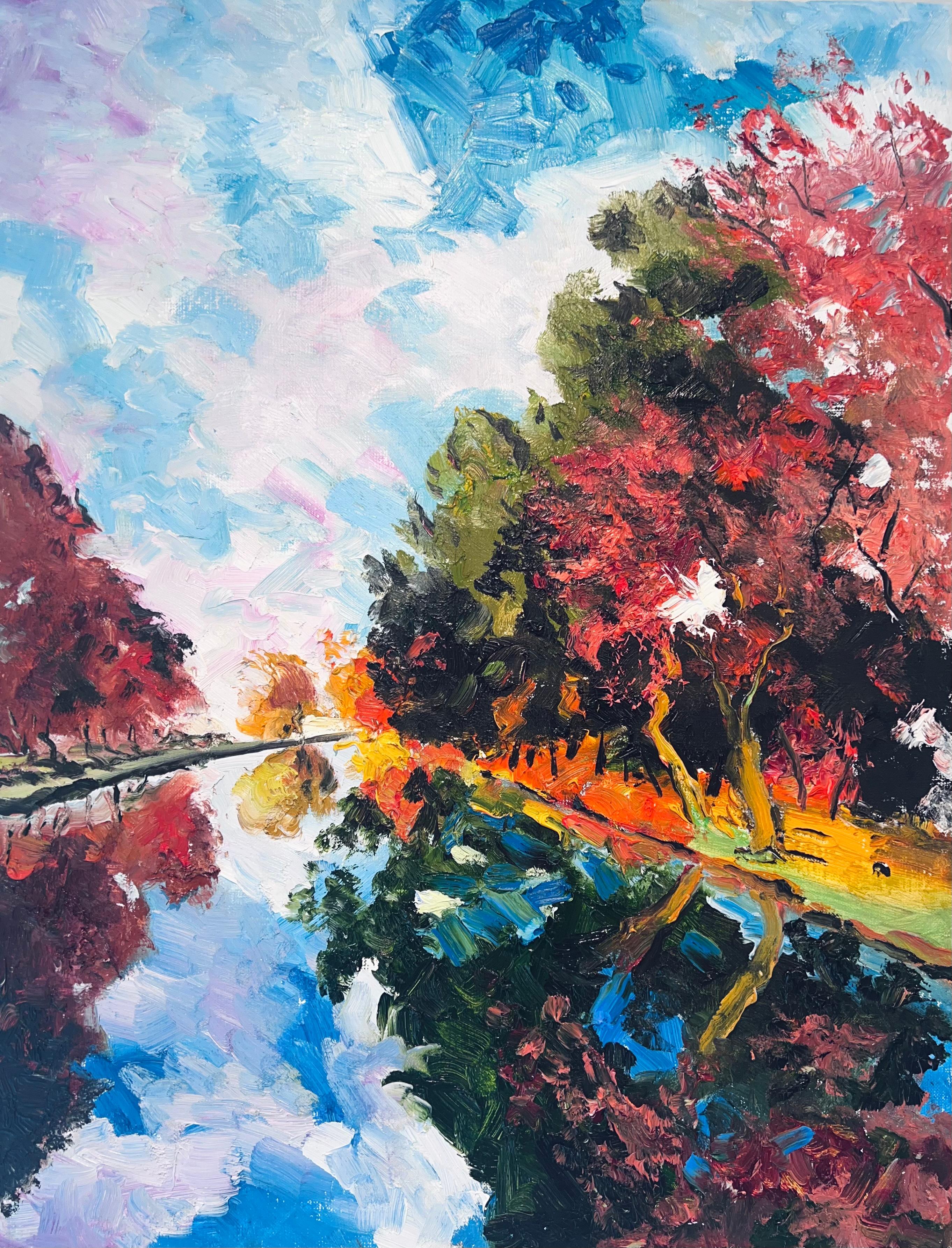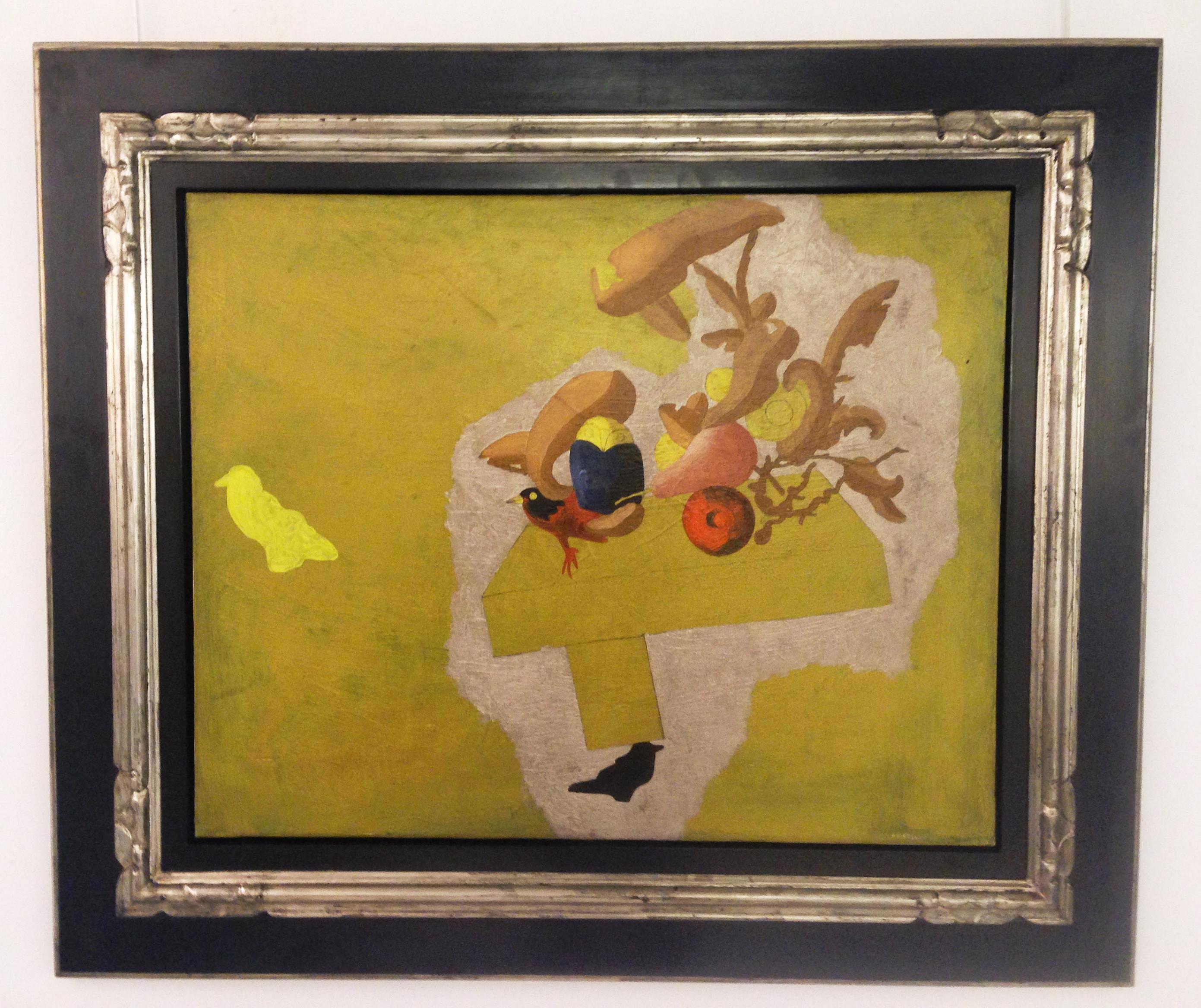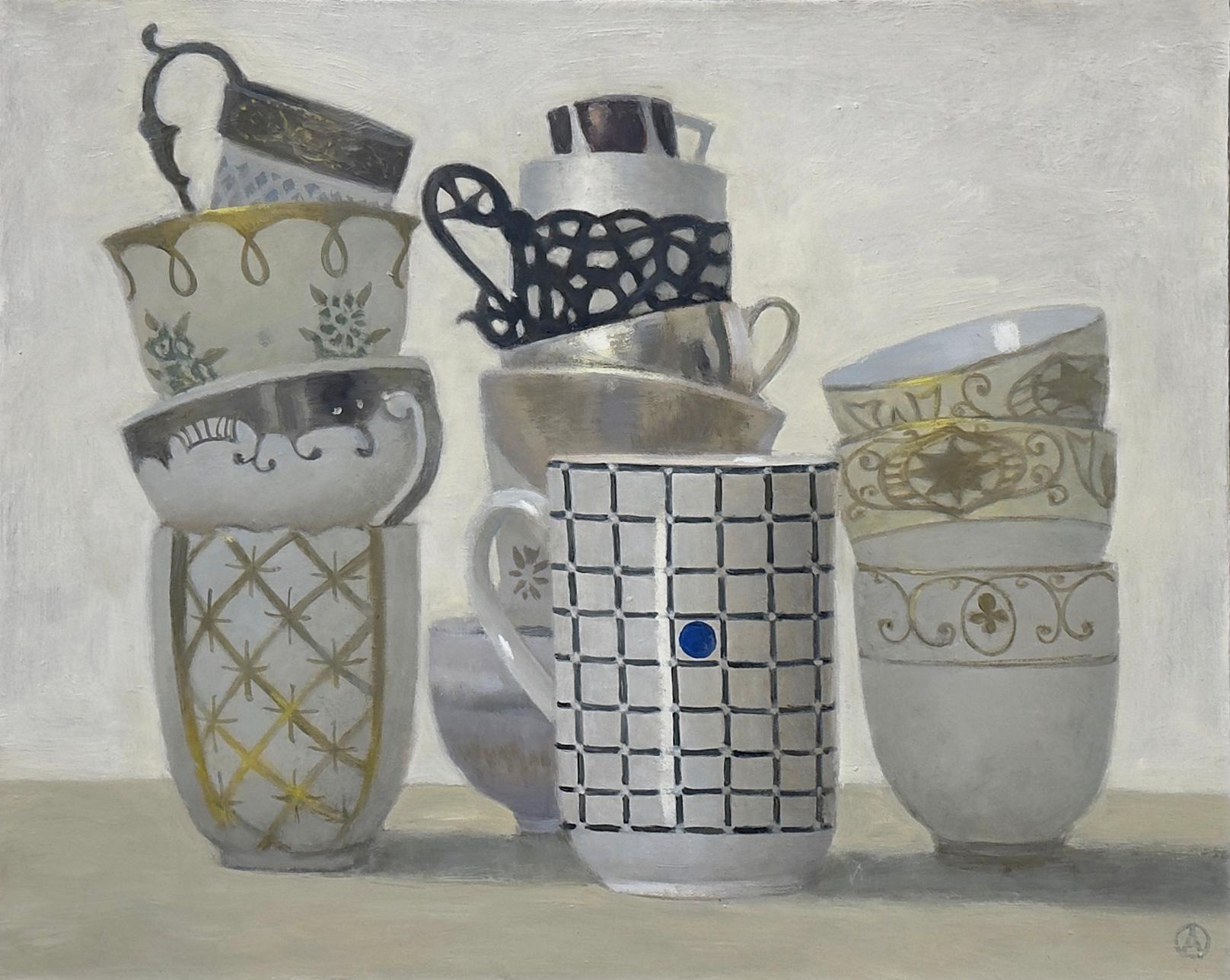Frank J. ReillyLiberty Bell
About the Item
- Creator:Frank J. Reilly (1906 - 1967)
- Dimensions:Height: 30 in (76.2 cm)Width: 40 in (101.6 cm)
- Medium:
- Period:
- Condition:
- Gallery Location:Fort Washington, PA
- Reference Number:1stDibs: LU38431071173
Frank J. Reilly
Frank J. Reilly was noted as "the No. 1 art teacher in America." Reilly is known for developing a means of organizing the palette. His value studies and chroma organization are still taught as the primary methods of oil paint organization. Reilly studied with Frank DuMond at the Art Students League of New York. He taught at the Grand Central School of Art, The Art Students League of New York and other art schools as well as establishing his own art school. Reilly was the main influence on George Passantino. He is credited with the mosaic mural in The Bronx High School of Science's front lobby. Reilly's influence continues today through the teaching and art of Michael Aviano and Jack Faragasso as well as their students Jon deMartin and Graydon Parrish. The Legacy of Frank J. Reilly by Jack Faragasso, from LINEA Journal of the Art Students League, Summer 2006, stated that one of the most maligned and misunderstood artist instructors of the Art Students League was the late Frank J. Reilly. Mr. Reilly was a feisty Irish-American endowed with great energy and charisma. He inspired fanatic devotion and loyalty from his students. His classes were always jam-packed morning, afternoon and night. On his off days he would drive to the League's studios in Woodstock, New York to teach landscape and outdoor figure painting. Somehow he found time to do illustrations, write articles on art, conceive and work on murals and do an occasional fine art easel painting. Married but childless, Mr. Reilly regarded his pupils as his family and sought to relate to them as such. He sought to give them the best training possible, and in order to introduce them to the art world, arranged contests with national magazines, paperback publishers, and even Portraits, Inc.
- ShippingRetrieving quote...Ships From: Fort Washington, PA
- Return PolicyA return for this item may be initiated within 14 days of delivery.
- Hunter and His DogsBy Joseph Francis KernanLocated in Fort Washington, PAFramed, dimensions: 45 x 39 in. Signed lower leftCategory
20th Century Figurative Paintings
MaterialsCanvas, Oil
- Pioneers with Covered WagonBy Daniel B. SchwartzLocated in Fort Washington, PAMedium: Oil and Pencil on Canvas Date: 1975 Signature: Signed Lower Right Dimensions: 18.00" x 26.00"Category
1970s Landscape Paintings
MaterialsOil, Canvas, Pencil
- 'Hands on Hips- One Two Three Four' Liberty Magazine CoverBy Leslie ThrasherLocated in Fort Washington, PADate: 1927 Medium: Oil on Canvas Dimensions: 20.00" x 16.00" Liberty Magazine Cover, December 3, 1927 "One Two- One Two- American Artist Label"Category
1920s Figurative Paintings
MaterialsCanvas, Oil
- Comisky Park StadiumBy Bernie FuchsLocated in Fort Washington, PAPainting for a poster, Comisky Park, Chicago White Sox Stadium 1985. Illustrator's Works Defined an Era: Bernie Fuchs, 76 By Adam Bernstein Washington Post Staff Writer Saturday, September 19, 2009 Bernie Fuchs, 76, an illustrator whose influential work for magazines ranging from Cosmopolitan to Sports Illustrated seamlessly blended qualities of traditional narrative with hints of abstract composition, died of esophageal cancer Sept. 17 at a care facility in Fairfield, Conn. He lived in nearby Westport. Mr. Fuchs was adept at balancing art and commerce. He met the needs of mass-circulation magazines accustomed to Norman Rockwell-style realism, but he injected a fresh vitality and impressionism that became hugely popular and transformed the illustration field. He even experimented with bold designs based on the abstract expressionism movement popularized by painters Jackson Pollock and Willem de Kooning. One vivid example, commissioned by McCall's magazine in the late 1950s, was a portrait of two young couples relaxing in a small room after dinner. One man is lying on the ground, his head nestled on a woman's lap and smoking a cigarette as she strokes his hair. While the image has the control and realism of Rockwell, it also has several more dynamic features taken from avant-garde techniques: the vigorous brush strokes; the tilted horizon that heightens a sense of drama; a lampshade in the foreground that appears slightly distorted; and, most strikingly, the placement of the couples in the distance instead of being the center of the picture. "Bernie combined the best of both worlds," said illustrator Murray Tinkelman, who directs the University of Hartford's master of fine arts program and chairs the New York-based Society of Illustrators' hall of fame committee. "He became the most emulated and imitated illustrator in the field through the 1980s . . . when the vogue turned to more decorative, whimsical, punkier illustrations that were influenced by underground cartoons like those of Robert Crumb." Mr. Fuchs entered the hall of fame in 1975. He was among the youngest inductees on a roster that includes Rockwell, N.C. Wyeth, Winslow Homer and John James Audubon. Bernard Leo Fuchs was born Oct. 19, 1932, in the coal mining town of O'Fallon, Ill., and his father soon abandoned the family. As a young man, Mr. Fuchs enjoyed drawing characters from Walt Disney movies...Category
1980s Other Art Style Paintings
MaterialsOil, Canvas
- Attorney at SeaBy Tom LovellLocated in Fort Washington, PAMedium: Oil on Canvas Signature: Signed TOM/LOVELL (lower left); also titled Attorney/at Sea (on the reverse)Category
20th Century Figurative Paintings
MaterialsOil, Canvas
- Figures in Rowboat Alongside of BargBy Anton Otto FischerLocated in Fort Washington, PASigned & Dated Lower RightCategory
1920s Figurative Paintings
MaterialsOil, Canvas
- pocket dark blue sloes, Baroque Still Life Painting, Small Art, Fruit ArtBy Dani HumberstoneLocated in Deddington, GBPocket Dark Blue Sloes is an original still-life painting by artist Dani Humberstone. This painting is a small scale renaissance inspired still life in a photorealistic style and sol...Category
2010s Realist Still-life Paintings
MaterialsCanvas, Oil
- QUESTIONING Sheep Realist Light and Shadow Oil on Canvas FramedBy Luke AutreyLocated in Houston, TXLOOK FOR FREE SHIPPING AT CHECKOUT. Questioning is an 16 x 20 oil painting of two sheep who look as if they are in search of something. Questioning is by Texas artist Luke Autr...Category
2010s American Realist Animal Paintings
MaterialsCanvas, Oil
- "Clear View" Abstract Oil PaintingLocated in Westport, CTThis abstract oil painting by Tony Iadicicco features a light grey palette. The painting has an abstracted landscape composition, with a stark horizon line running through the compos...Category
2010s Abstract Abstract Paintings
MaterialsCanvas, Oil
- Autumnal River- Original landscape impressionism oil painting - contemporary ArtBy Denis RibasLocated in London, Chelsea"Autumnal River" by Denis Ribas is an exquisite original landscape painting that invites viewers to immerse themselves in the serene beauty of an autumnal riverscape. With masterful ...Category
21st Century and Contemporary Abstract Impressionist Abstract Paintings
MaterialsCanvas, Oil
- Jorge Castillo Golden Yellow Surreal. 1985 original abstract acrylic canvasBy Jorge José Castillo CasalderreyLocated in CORAL GABLES - MIAMI, FLOriginal work by the Spanish artist Jorge Castillo Perfect state CASTILLO, Jorge (Pontevedra, 1933). Since childhood, Jorge Castillo is passionate about drawing, and takes only te...Category
1980s Abstract Abstract Paintings
MaterialsCanvas, Oil
- TEACUPS - Contemporary Still Life / Russian American ArtistBy Olga AntonovaLocated in New York, NYOriginal oil painting by Olga Antonova Olga Antonova (b. 1956, Volgograd, Russia) completed her classical art training at the Ilya Repin Institute of Painting in St. Petersburg, Russ...Category
2010s Contemporary Still-life Paintings
MaterialsCanvas, Oil





